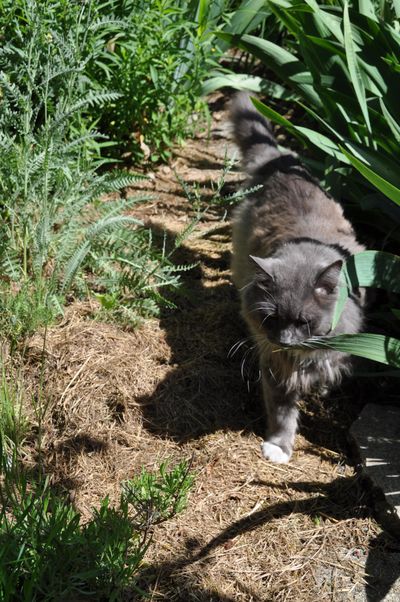Gardening: Deep watering paramount during heat of summer

In some ways the stretch of recent cooler weather has been great for the gardens. Plants have stayed in bloom a little longer, and with the timely rains, it hasn’t been too hard to keep things watered. That all could change during the hot season.
To protect gardens against the heat, check your irrigation system for plugged or broken heads and loose connections and fix them. Increase the frequency and duration of your sprinkler operation. Watering deeply will put extra moisture deep in the ground that the plants can draw on later.
If you have trees and shrubs in a lawn area, wrap a soaker hose through the planting that you can hook up for deep watering in August and September. Systems set to water a lawn often don’t get enough water deep into the soil where the deeper shrub and tree roots can reach it. Remember last year’s 80 days with no rain? The WSU Master Gardener Plant Clinic is seeing a lot of residual damage from the drought stress of last summer.
Do a good weeding and then mulch the areas with two to three inches of clean grass clippings, shredded leaves or pine needles or, if you want to spend the money, medium-sized bark chips. Medium-sized chips pack down but not too tightly for water to get through. The grass clippings need to be free of herbicides which could damage the shrubs and trees you put the clippings on.
In the vegetable garden, check drip irrigation heads for plugs before the plants really need the water. If it gets really hot and dry at the end of the summer, make sure the tomatoes are getting enough water. Tomato blossom end rot is caused when the tomato plants dry out too much between waterings.
We are already having issues with mildew in a lot of plants, so it might be time to do a preventative spraying with baking soda and water. Mix three tablespoons pure baking soda with 1 gallon of water. Add one tablespoon vegetable oil to help the spray stick to the leaves and two drops of dish soap to help the solution mix properly. Thoroughly mix the concoction and put in a sprayer or sprayer bottle. Apply to squash, tomatoes, eggplant, cucumbers, roses and other ornamental plants that are prone to mildew. Reapply every week as sprinklers will eventually wash it off. This must be done prior to the mildew attacking the plants as it won’t make it disappear.
Have a watering plan in place for any newly planted perennials, shrubs and trees. When we get our hot, dry winds and very low humidity, the small root system on a new plant just can’t get water to the leaves fast enough. I have seen a large potted Japanese maple get completely desiccated in one hot, windy afternoon because of this.